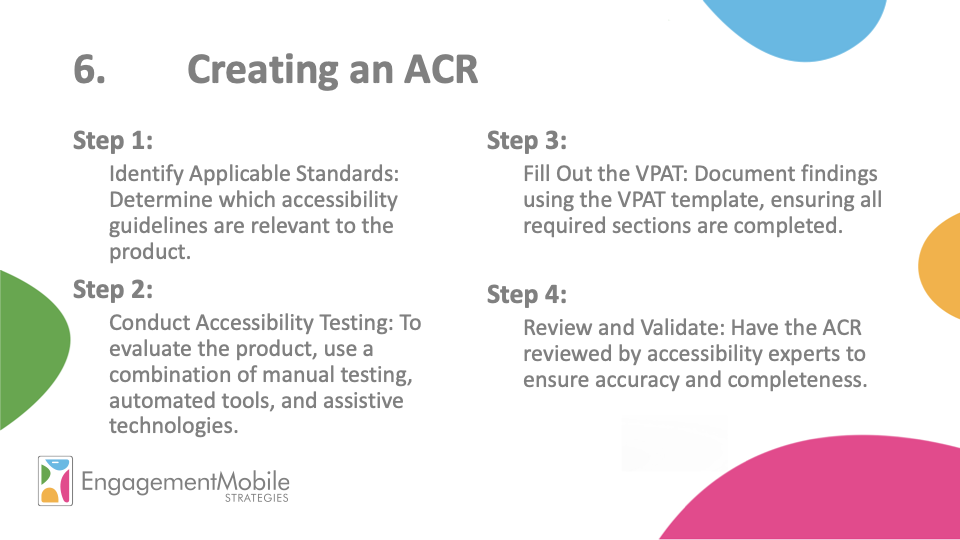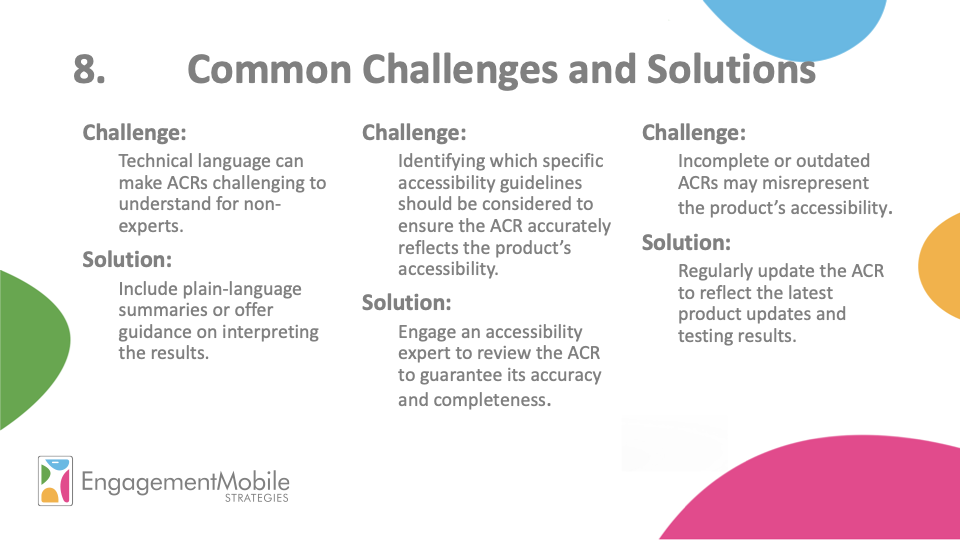Accessibility Conformance Report (ACR): A blueprint for building accessible technology
September 18, 2024
No comments yet

Think of a builder constructing a house. If the builder skips over crucial parts of the blueprint, like supports or foundations, the house will eventually show cracks or collapse.
Apply the blueprint to your association’s accessible information and communication technology (ICT). Federal agencies and many state and local governments require ICT to be procured, developed, maintained, or used to be accessible. ICT includes software, hardware, electronic content, support documentation, and services. Additionally, accessible ICT is a practical business practice for an association trying to retain its older members (Baby boomers) or attract new younger members (Generation Z).
But how do you ensure the ICT purchase is accessible?
Ask your vendors for an Accessibility Conformance Report (ACR). An ACR is a blueprint that outlines the foundational aspects of accessibility in technology. The ACR document explains how information and communication technology meet the Revised 508 Standards for IT accessibility. ACRs help buyers assess ICT for accessibility when researching and evaluating proposals. Vendors with a current ACR demonstrate their commitment to inclusivity. By requiring it, associations ensure that their digital tools are built on solid and inclusive foundations and that legal requirements are met. This prevents issues arising from accessibility gaps.
To understand the Accessibility Conformance Report (ACR), we’ll first break down the core concepts and then build an understanding.
1. Understanding Accessibility
Definition:
- The primary goal is to provide equal access and opportunities to everyone, regardless of their physical, sensory, or cognitive abilities.
Purpose:
- The primary goal is to provide equal access and opportunities to everyone, regardless of their physical, sensory, or cognitive abilities.
2. Accessibility Standards
Fundamental Concept:
- Accessibility standards define how products (such as software, websites, and electronic content) should be designed to be accessible.
Key Standards:
- WCAG (Web Content Accessibility Guidelines) provides guidelines for making web content more accessible, covering various disabilities.
- Section 508: A U.S. law requiring federal agencies to make electronic and information technology accessible to people with disabilities.
- EN 301 549: A European standard that specifies the accessibility requirements for ICT products and services.

3. Purpose of an Accessibility Conformance Report (ACR)
Definition:
- An ACR is a document that outlines how well a product meets accessibility standards.
Purpose:
- To provide a detailed evaluation of a product’s accessibility features and shortcomings.
- To help organizations make informed decisions about the accessibility of products they consider purchasing or using.
- To demonstrate commitment to accessibility and transparency for compliance and ethical reasons.
4. Structure of an ACR using the VPAT® template created by the IT Industry Council (ITI)
VPAT (Voluntary Product Accessibility Template):
- The ACR is often formatted using the VPAT, a standardized template created by the IT Industry Council (ITI). The VPAT is the most common way an ACR is completed.
Sections of a VPAT:
- Product Information: Basic details about the product, including its purpose and the specific version evaluated.
- Evaluation Methods Used: Describes how the accessibility assessment was conducted (manual testing, automated tools, etc.).
- Accessibility Standards/Guidelines: Lists the specific accessibility guidelines against which the product is being evaluated (e.g., WCAG 2.1, Section 508).
- Conformance Levels: Accessibility is rated based on levels (A, AA, AAA for WCAG), which shows how well the product meets the guidelines.
- Detailed Conformance Information: This section provides specific information about How the product does or does not meet each criterion in the standards, often with comments explaining the findings.

5. Fundamental Principles of an ACR
Transparency:
- The report should accurately reflect the product’s accessibility, including strengths and improvement areas.
Consistency:
- Use a standard format like the VPAT to ensure reports are comparable across different products.
Detail:
- Provide enough detail to allow decision-makers to understand the specific accessibility issues and their potential impact on users.

Note: An organization can conduct these steps on its own. Government Services Administration self-serve
resource: https://www.section508.gov/sell/acr/
All steps can be completed using an accessibility expert.
7. Using an ACR
For Buyers:
- Use the ACR to assess whether a product meets your organization’s accessibility needs and legal requirements.
For Vendors:
- Use the ACR to demonstrate your product’s accessibility conformance to potential buyers, showcasing your commitment to inclusivity.


By breaking down the Accessibility Conformance Report into these fundamental principles and steps, you can better understand its purpose, structure, and use. This approach also identifies areas where more information or clarification may be needed. Including accessibility experts makes the concept more manageable and understandable.
Ask your present and new vendors for an ACR. It’s an association’s blueprint for building accessible technology. Vendors will demonstrate their commitment to inclusivity while associations ensure accessibility needs and legal requirements are met.
Wallach is the CEO Emeritus of Engagement Mobile Strategies, a consulting agency committed to helping associations increase member engagement, retention, and non-dues revenue through inclusive, accessible technology strategy and implementation.
For more information about member engagement and association technology, visit www.engagementmobile.com or email curious@engagementmobile.com.
